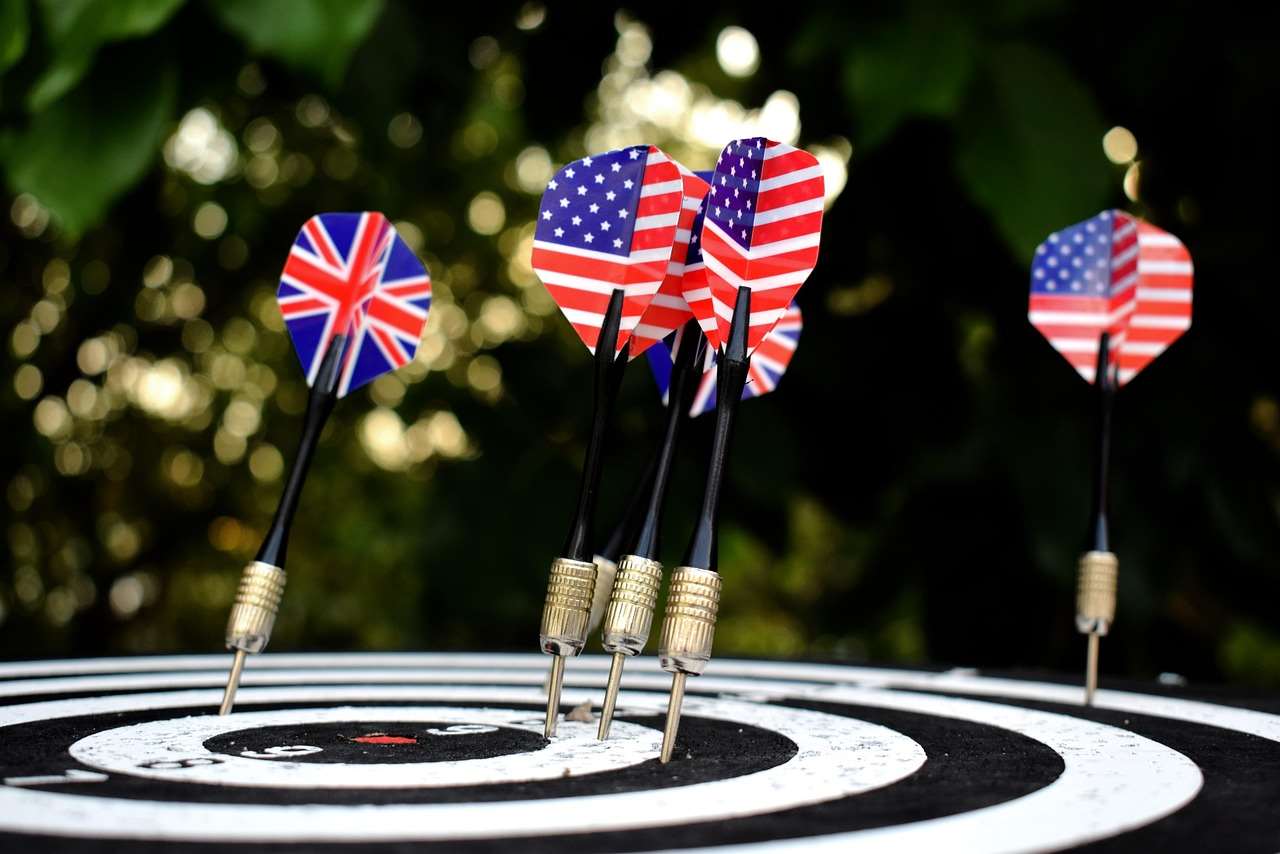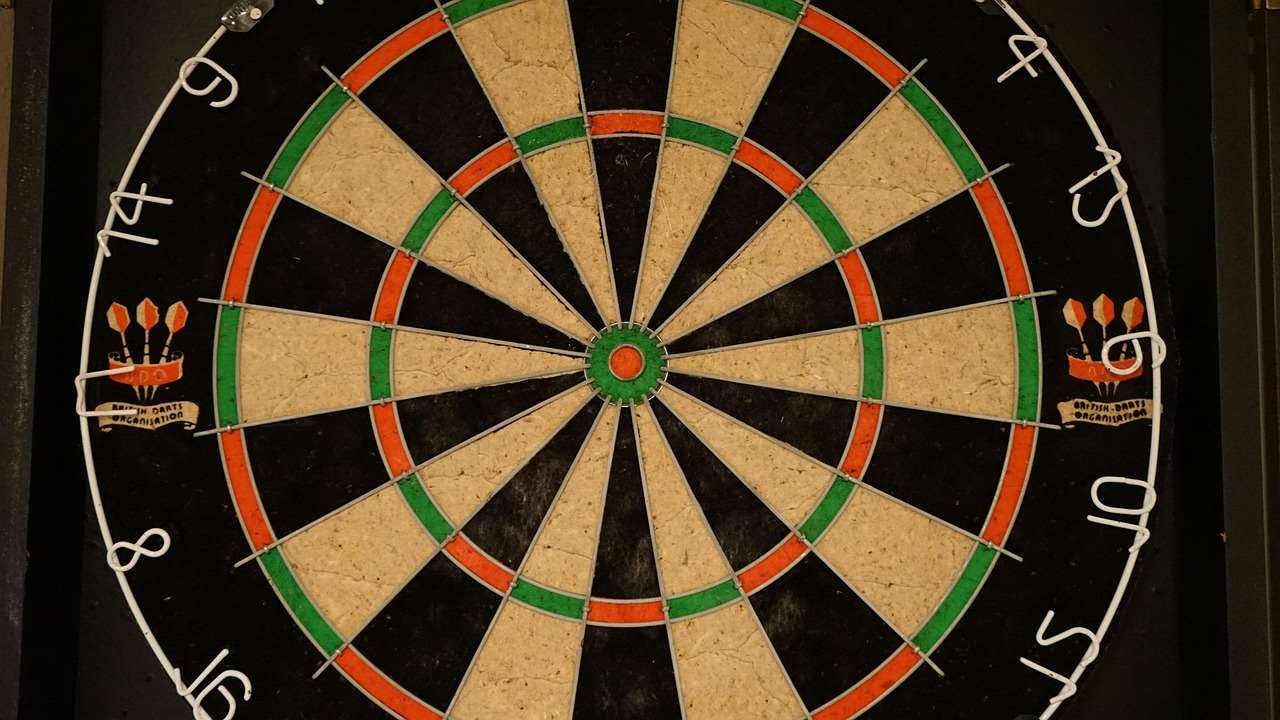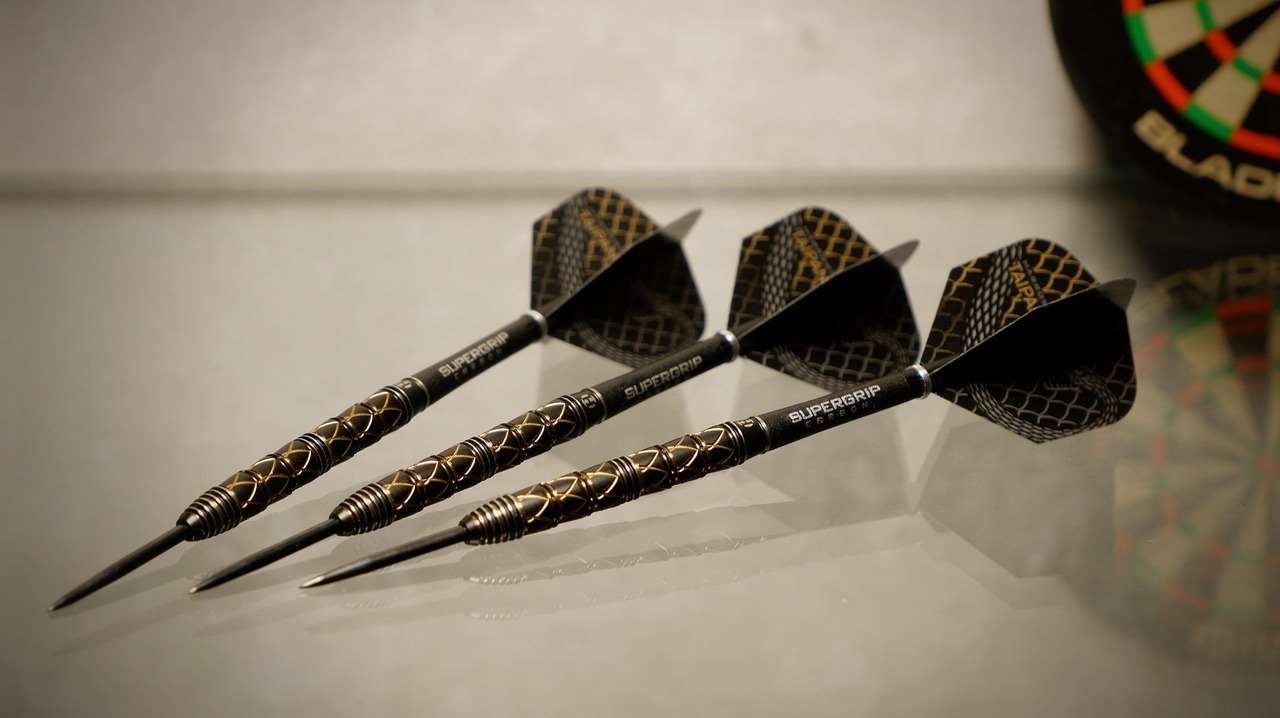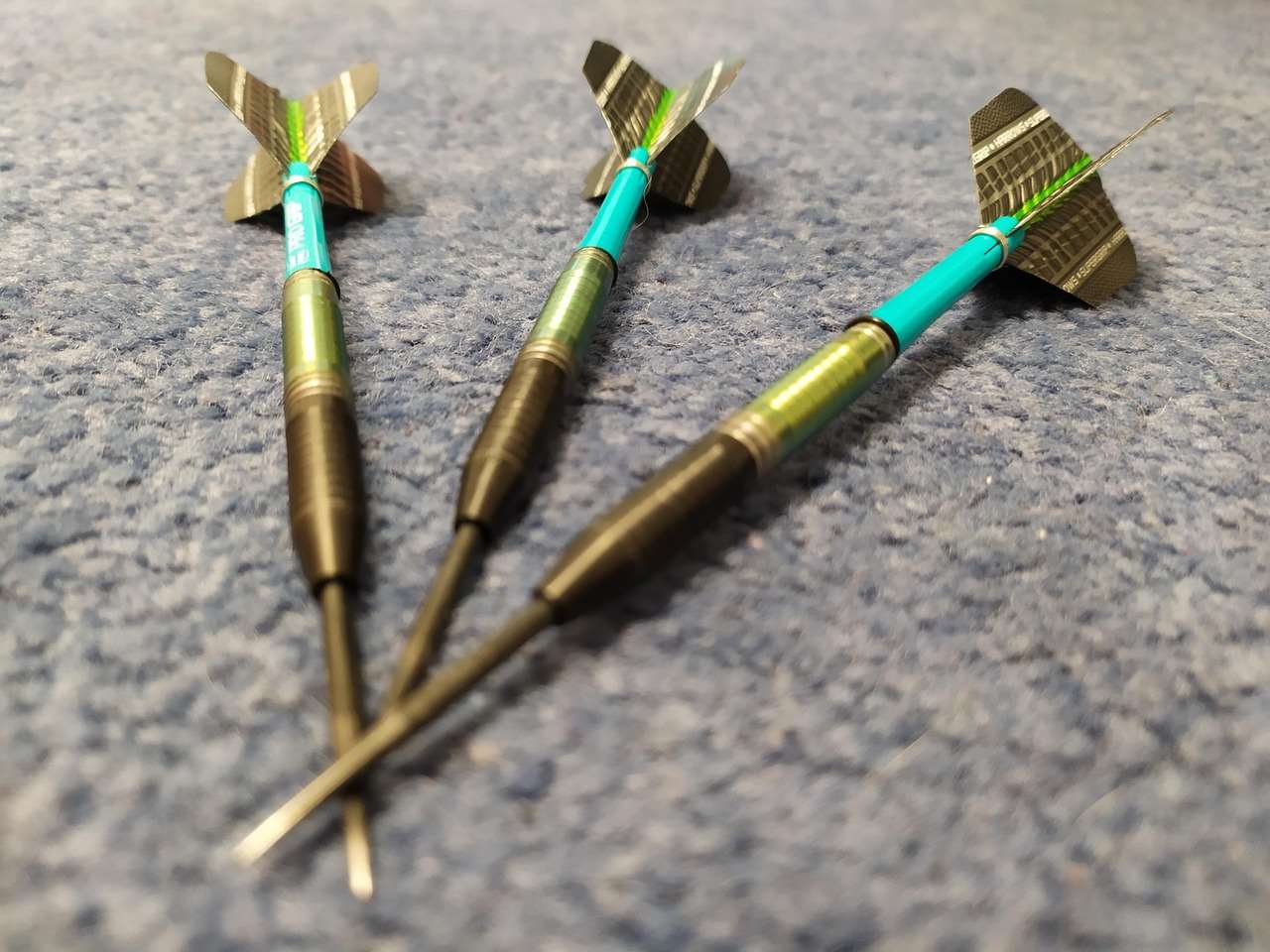Knowing how to keep score for Cricket darts manually is essential for an authentic and enjoyable game. This article provides a step-by-step guide to manual scoring for Cricket darts, covering everything from setting up your scorecard to tracking hits and marking closures, and explaining advanced scoring scenarios.
⚠️ Still Using Pen & Paper (or a Chalkboard)?! ⚠️
Step into the future! The Dart Counter App handles all the scoring, suggests checkouts, and tracks your stats automatically. It's easier than you think!
Try the Smart Dart Counter App FREE!Ready for an upgrade? Click above!
Understanding the Basics of Cricket Darts
Cricket darts isn’t just about hitting the bullseye; it’s a strategic game that requires players to “close out” specific numbers on the dartboard before their opponent. Before diving into how to keep score for Cricket darts manually, let’s cover the game’s fundamental rules.
The Numbers in Play
In standard Cricket darts, the numbers 20, 19, 18, 17, 16, 15, and the bullseye are in play. Players aim to hit these numbers to “open” them. Each number must be hit three times to be considered opened. These hits can be achieved through single, double, or triple hits. For example, hitting a triple 20 will open (close) the 20.

Opening and Closing Numbers
A number is considered “open” when a player has hit it three times (or the equivalent, such as a triple). Once a number is open, the player can score points on that number if their opponent hasn’t also opened it. A number is “closed” for a player when they have hit it three times *and* their opponent has also hit it three times, or if the player has opened and then hit that segment more than three times before the opponent opens it. Players continue to score on opened numbers until the number is closed for everyone or the game ends.
Winning the Game
To win a game of Cricket darts, a player must:
- Close all of the required numbers (20, 19, 18, 17, 16, 15, and the bullseye).
- Have a score equal to or higher than their opponent’s score.
If a player closes all the numbers but is behind in points, they must continue scoring on the open numbers until they either surpass their opponent’s score or the opponent closes out all the numbers and takes the lead. If a player closes all numbers first but is behind on the score and the other player has not closed all their numbers yet, the other player can continue scoring on their open numbers until either they pass the first player’s score, or they close all the numbers too. If the first player to close has the lower score, then they do not win the game.
Setting Up Your Cricket Darts Scorecard
Before you can start how to keep score for Cricket darts manually, you’ll need to prepare your scorecard. This can be as simple as a piece of paper and a pen, or a dedicated Cricket scorecard.
Creating a Basic Scorecard
Divide the paper into columns for each player. Label each column with the player’s name or initials. Then, list the numbers in play (20, 19, 18, 17, 16, 15, and Bullseye) vertically down the center of the paper. Leave space on either side of these numbers to mark hits and scores.
Example Scorecard Layout
Player 1 | 20 19 18 17 16 15 B | Player 2
-------- | --------------------- | --------
| |
| |
| |
Using a Pre-Printed Scorecard
You can find pre-printed Cricket dart scorecards online or at dart supply stores. These often include helpful reminders of the rules and scoring conventions. They will follow the same general layout as a manually created scorecard.
Tracking Hits and Marking Closures
Now that your scorecard is ready, let’s look at how to keep score for Cricket darts manually during the game.

Marking Single Hits
When a player hits a number in play, mark it with a simple slash (/). Each number requires three hits to open.
Marking Double and Triple Hits
A double hit can be marked with a “D” or by crossing the slash to create an “X”. A triple hit can be marked with a “T” or by circling the “X”. Alternatively, you could use two slashes for a double and three for a triple, but using “D” and “T” is generally clearer.
Example Marking
If Player 1 hits a single 20, a double 20, and then another single 20, the scorecard would look like this:
Player 1 | 20 19 18 17 16 15 B | Player 2 -------- | --------------------- | -------- / D / | |
This indicates that Player 1 has opened the 20.
Closing a Number
Once a player has hit a number three times, they have opened it. Continue marking any further hits they make on that segment. The opponent must also hit the same segment three times to close it to prevent the first player from scoring points on it. When the opponent closes the number by hitting it three times, mark it with a circle around all marks (/) or write ‘closed’ next to that number for both players, signifying that the number is now closed for both of them.
Calculating Scores in Cricket Darts
Scoring in Cricket darts only occurs after a player has opened a number. If they hit that number again and their opponent hasn’t opened it, they score points based on the hit.
Single, Double, and Triple Scoring
A single hit on an opened number scores the face value of that number. A double scores twice the face value, and a triple scores three times the face value.
Consider the game Basic Darts Fundamentals for Beginners for getting started.
Example Scoring
Player 1 has opened the 20, and Player 2 hasn’t. Player 1 then hits a triple 20. Player 1 scores 60 points (3 x 20). This is added to their total score. If Player 1 then hits a single 20 in the following round, they score an additional 20 points.
Recording Scores
Keep a running total of each player’s score on the scorecard. This can be done next to their name or at the bottom of their column. Remember that scores only increase after a number has been opened by the scoring player. It’s crucial to maintain accurate scorekeeping throughout the game.

Advanced Scoring Scenarios and Strategies
How to keep score for Cricket darts manually can become more complex with advanced scenarios. Understanding these situations is crucial for accurate scorekeeping and strategic play.
Over-Closing
In some variations of Cricket darts, “over-closing” a number is allowed. This means that once a player has opened a number, any subsequent hits on that number before the opponent opens it continue to add to the player’s score. However, if a player hits the number so many times, that they reach a theoretical ‘fourth hit’ before the opponent opens it, they do not gain any extra scoring advantage. For instance, if a player has three marks for a number and hits a double (2), they gain one mark from it. The second mark from it does not count toward points as after only one more mark, they can no longer score points.
Cut-Throat Cricket
In Cut-Throat Cricket, the scoring is reversed. Instead of scoring points for themselves, players add points to their opponents’ scores when they hit an opened number that their opponents haven’t opened. The goal is to have the lowest score at the end of the game. The principles of tracking hits and marking closures remain the same, but the scoring calculation is inverted. Adapting darts rules for beginners can help simplify Cut-Throat Cricket for new players.
Strategic Play and Target Selection
Beyond just how to keep score for Cricket darts manually, understanding the strategic elements of the game is important. Deciding which numbers to target and when to switch between offense and defense can significantly impact the outcome of the match. For example, if an opponent has 2 marks on 20, the proper strategy would be to close that number to keep them from scoring on you.
Tips for Accurate Manual Scorekeeping
Accurate scorekeeping is crucial for a fair and enjoyable game of Cricket darts. Here are some tips to ensure you’re how to keep score for Cricket darts manually correctly.
Designate a Scorer
Ideally, one person should be responsible for keeping score. This minimizes errors and ensures consistency. Having a dedicated scorer allows other players to fully focus on their throws.
Double-Check Scores
Periodically double-check the score with both players. This helps catch any mistakes early on and prevents disputes later in the game. This ensures score accuracy and sportsmanship.
Use Clear and Consistent Markings
Use clear and consistent markings on the scorecard to avoid confusion. Develop a system that works for you and stick to it. For example, always use “D” for doubles and “T” for triples.

Keep a Separate Running Total
In addition to marking hits, keep a separate running total of each player’s score. This makes it easier to quickly determine the current standings and avoid miscalculations.
Use Technology to Assist
While this article focuses on manual scoring, there are many apps and electronic dartboards that can automatically keep score. Consider using these tools to supplement your manual scoring or to double-check your results. However, learning alternative darts rules for home play can add variety and excitement to your dart games.
Troubleshooting Common Scoring Errors
Even with careful attention, scoring errors can occur. Knowing how to identify and correct these errors is an important part of how to keep score for Cricket darts manually.
Miscounting Hits
One of the most common errors is miscounting the number of hits on a particular number. To prevent this, always double-check the markings on the scorecard after each turn. If there’s a discrepancy, review the throws with the players involved.
Incorrect Score Calculation
Incorrect score calculations can also lead to problems. Make sure you understand the scoring rules for singles, doubles, and triples. Use a calculator if needed to avoid arithmetic errors. Understanding fun dart game variations with modified rules can help keep the game engaging and exciting.
Forgetting to Mark Closures
Forgetting to mark closures can result in one player inadvertently scoring points when they shouldn’t be. Make sure to clearly mark when a number has been closed for both players. Use a circle or a distinct symbol to indicate closure.
Disputes and Reversals
If a scoring error is discovered after several rounds, it may be necessary to reverse some of the scores. Work with the players to reconstruct the throws and determine the correct scores. Be fair and transparent in your corrections.

The End Game: Declaring a Winner
The game ends when one player has closed all the required numbers and has a score equal to or higher than their opponent’s score. Accurately determining the winner is the final step in how to keep score for Cricket darts manually.
Verifying Closure
Before declaring a winner, verify that the player has indeed closed all the required numbers. Check the scorecard to ensure that all numbers (20, 19, 18, 17, 16, 15, and the bullseye) are marked as closed.
Comparing Scores
Compare the scores of the two players. If the player who closed all the numbers has a higher score, they are the winner. If they have a lower score, the game continues until they either surpass their opponent’s score or their opponent closes out all the numbers and takes the lead. Consider how to make darts fairer with handicap rules if there’s a significant skill difference between players.
Declaring the Winner
Once you have verified that the player has closed all the numbers and has a score equal to or greater than their opponent’s, declare them the winner. Congratulate the winner and prepare for the next game!
Conclusion
Mastering how to keep score for Cricket darts manually is essential for enjoying this strategic and engaging game. From setting up your scorecard to tracking hits, calculating scores, and troubleshooting errors, this guide has provided you with the knowledge and skills to accurately manage the game. Remember to practice consistent markings, double-check scores, and understand the advanced scoring scenarios to ensure a fair and fun experience for all players. Now, grab your darts, gather your friends, and put your newfound scoring skills to the test! Ready to elevate your dart game? Check out our article on Basic Darts Fundamentals for Beginners.
Hi, I’m Dieter, and I created Dartcounter (Dartcounterapp.com). My motivation wasn’t being a darts expert – quite the opposite! When I first started playing, I loved the game but found keeping accurate scores and tracking stats difficult and distracting.
I figured I couldn’t be the only one struggling with this. So, I decided to build a solution: an easy-to-use application that everyone, no matter their experience level, could use to manage scoring effortlessly.
My goal for Dartcounter was simple: let the app handle the numbers – the scoring, the averages, the stats, even checkout suggestions – so players could focus purely on their throw and enjoying the game. It began as a way to solve my own beginner’s problem, and I’m thrilled it has grown into a helpful tool for the wider darts community.